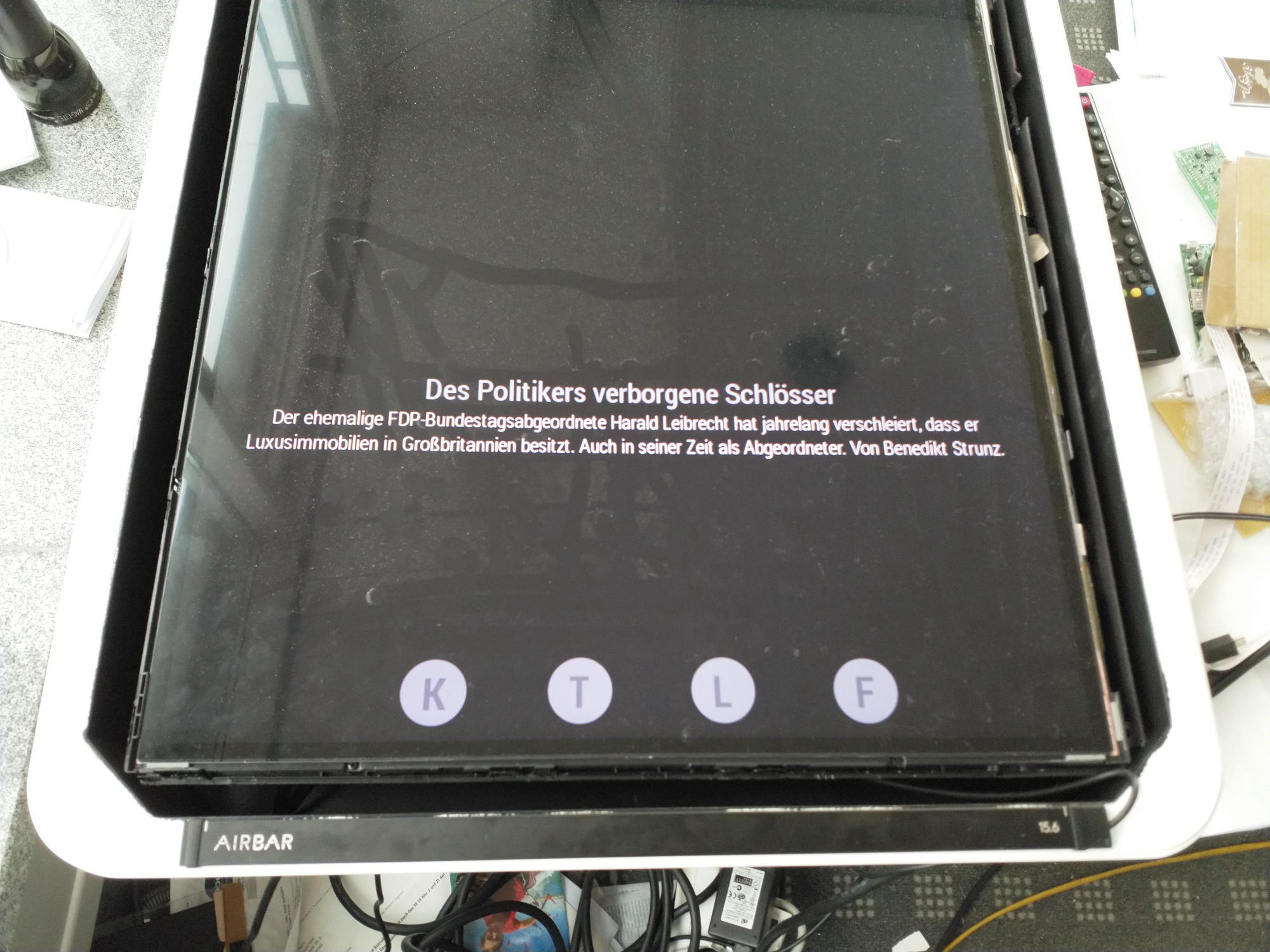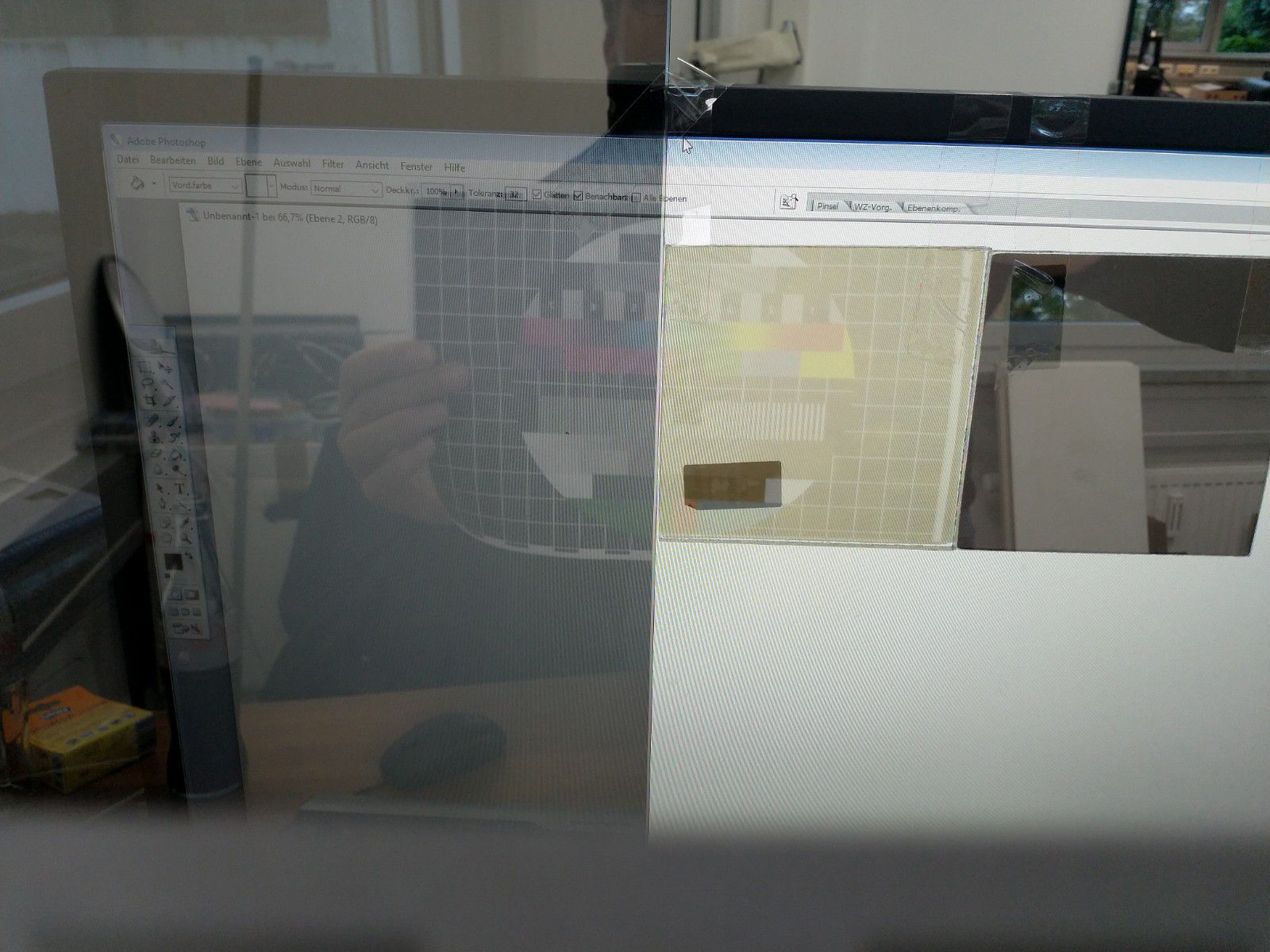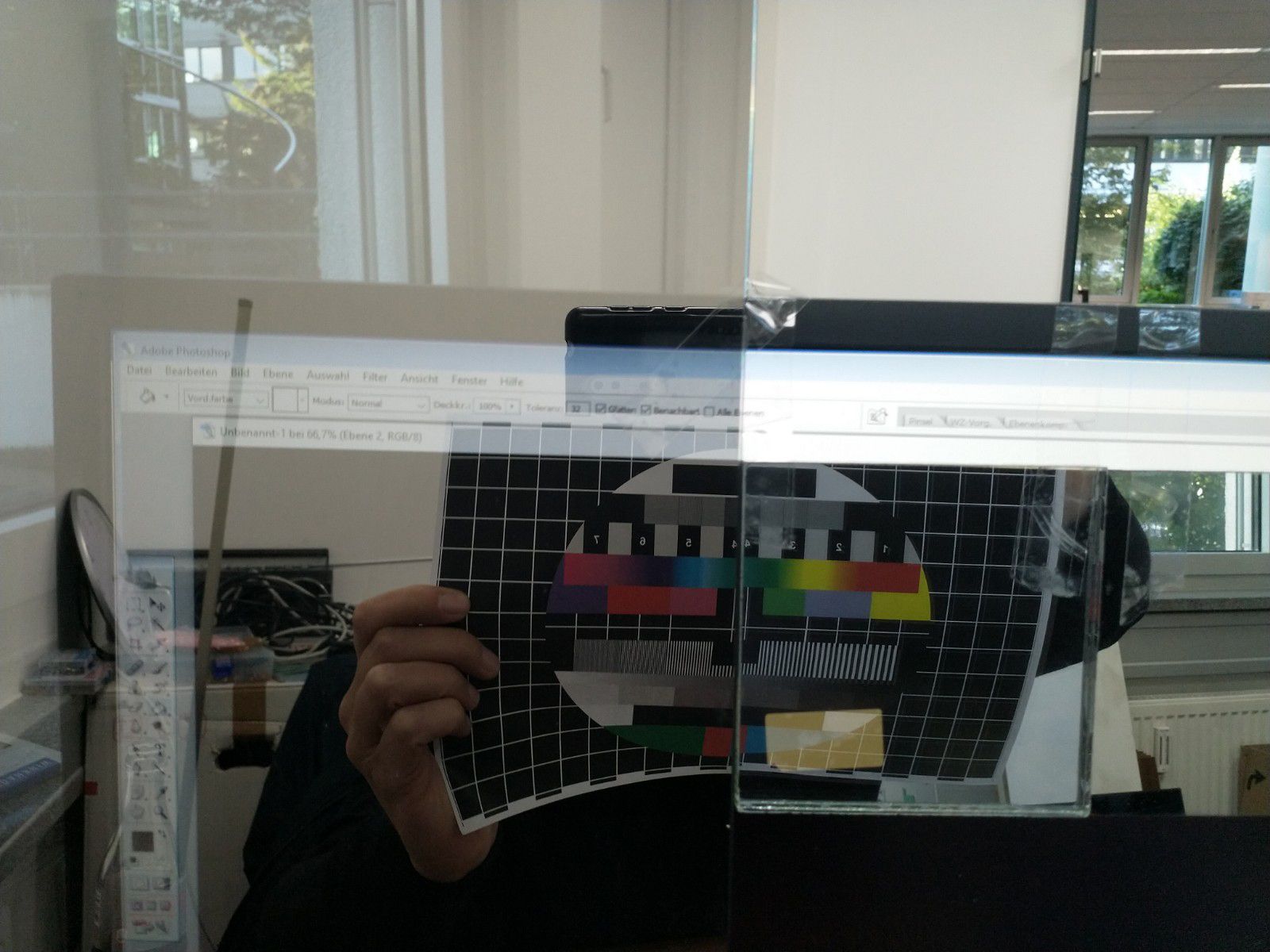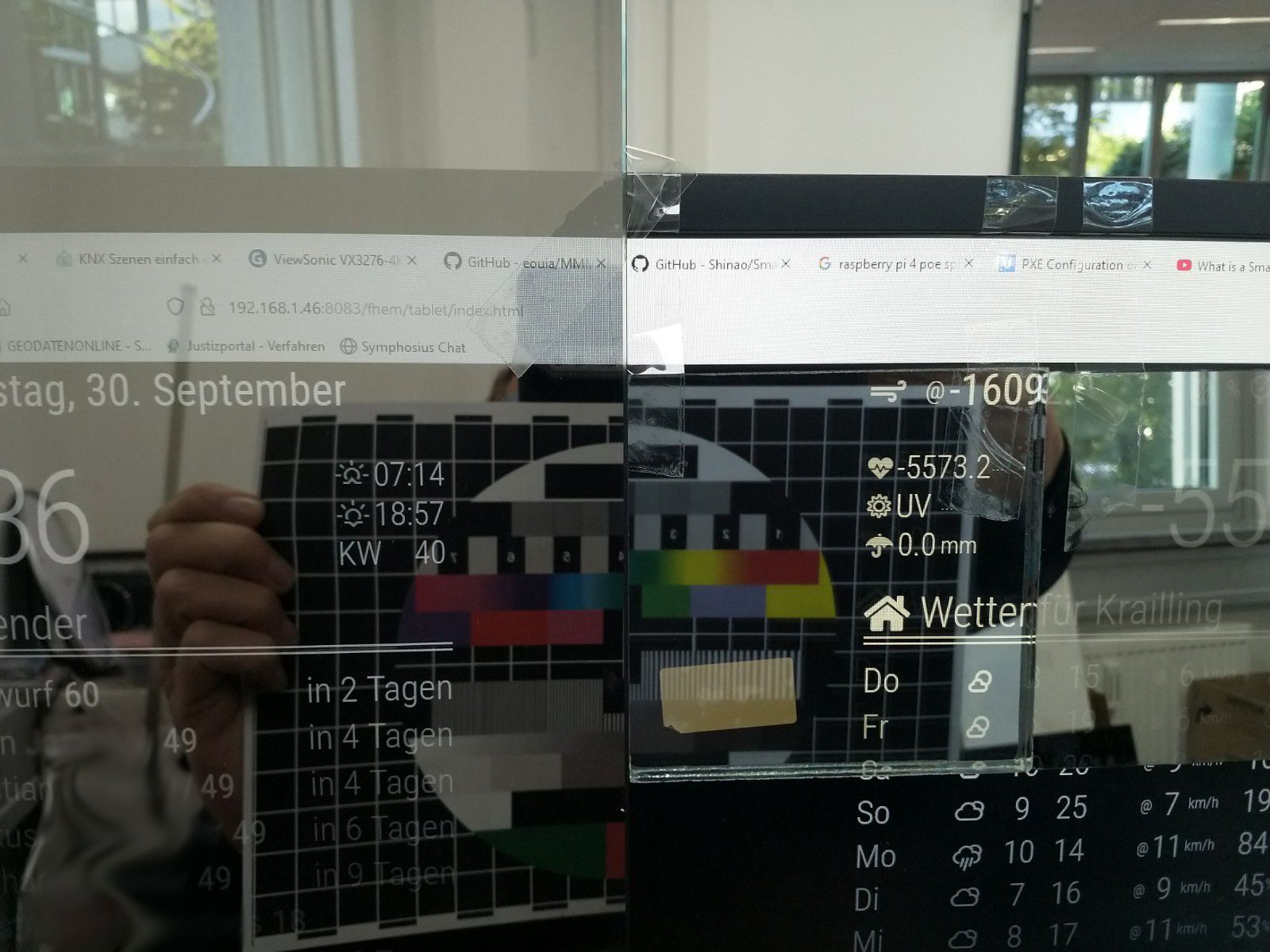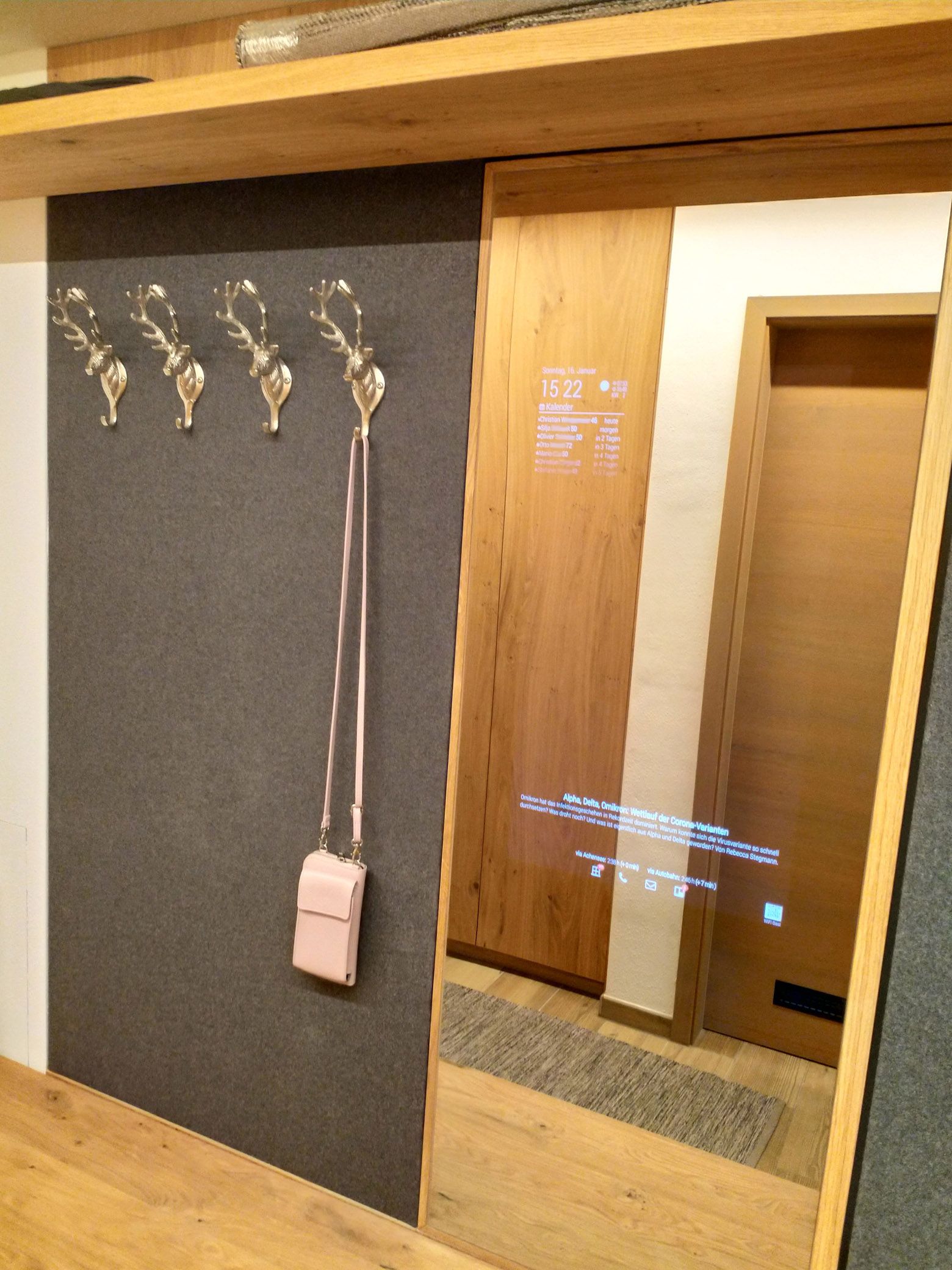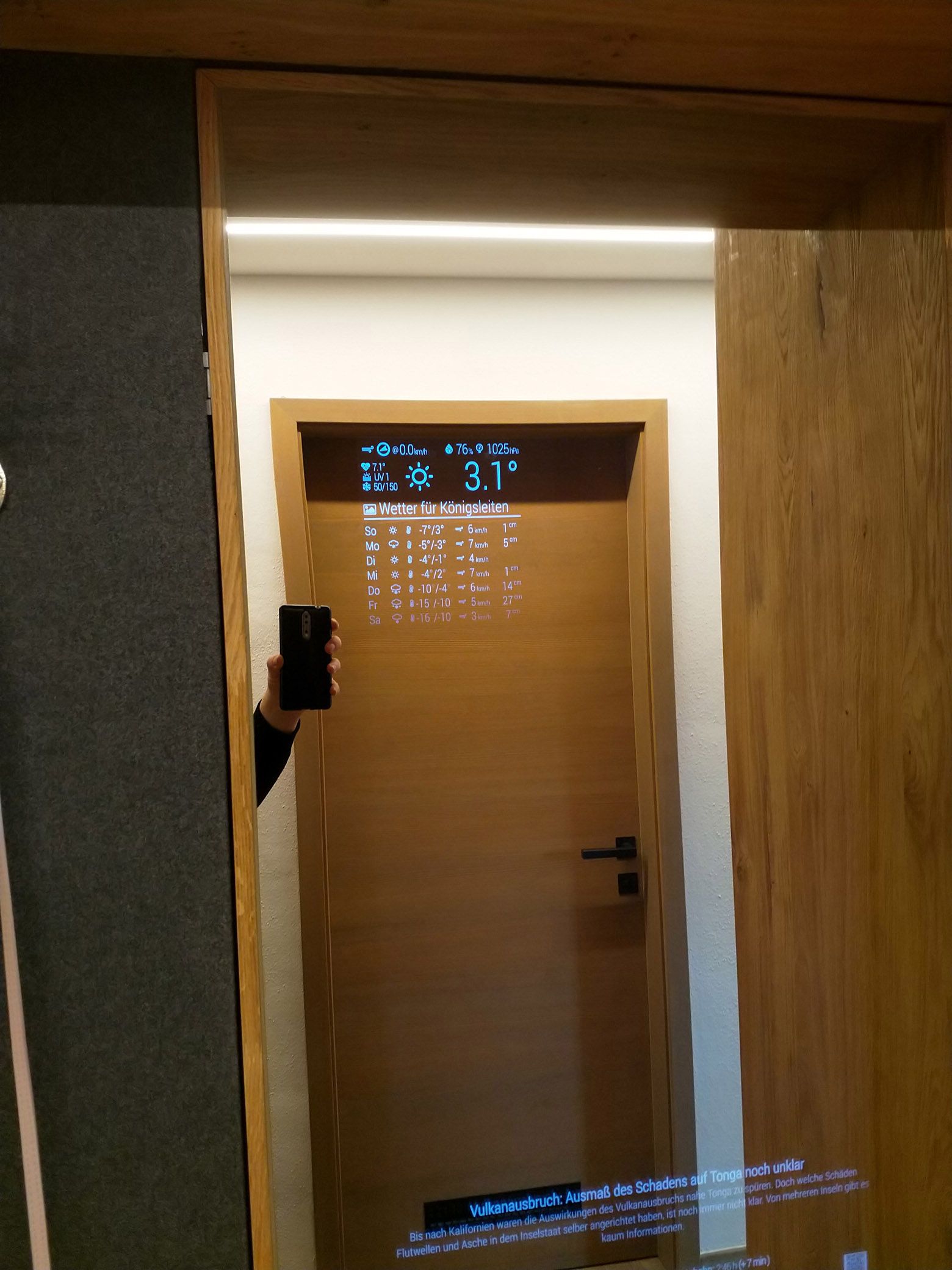@internetpolice said in *NEW LIST 29.06.2021* Two way community order for mirror glass for all european countries - Open until at least 10 people have entered:
Hey @Goldjunge_Chriz . Why is your advertised mirror so reflective? I put for a test everything together, but it is very dark. How can I improve it?
I had the same impression when I installed my first magic mirror a couple of years back with Chriz’ mirror glass and man, was I NOT pleased with the outcome initially…
But that was before I understood how a 2-way-mirror works, as this is crucial to be able to find the right setup/mirror glass for your individual needs.
At the moment I do not have a sample of Chriz’ mirror at hands (the one I ordered is installed at my brother’s house) so the pictures below are for illustrational purposes only!
But I can definitely say now that Chriz’ mirror is one of the best you can get out there. Of course, all depends on your individual room conditions (bright or dark, windows or none, etc.). When it comes to weight though there is no competition. Chriz’ mirror is incredibly light.
But don’t get too excited. 2-way-mirrors are simply much “darker” than regular mirrors…
@Goldjunge_Chriz Nicht dass es heisst, ich würde hier Deinen Thread kapern ;-) Mein unten stehender Vergleich soll nur technische Details erklären.
It’ s a little off-topic, but…
A usual mirror is made from clear glass and has the reflective coating on the rear-side. That way all “incoming” light travels through the glass, gets reflected (minus refraction of the glass itself) and travels all the way back out. This way you will get the highest possible reflection (~97%) but zero transmission. For illustrational purposes I call this a 1-way-mirror because the light source (ambient light) is only on one side of the mirror.
On a 2-way-mirror on the other hand, there are 2 light sources. One coming from the frontside (ambient light) and one coming from the backside (display light). The purpose of such a mirror is to “separate” these two light sources as good as possible while still allowing a certain amount of backside light to pass through at the same time. Most mirrors I know try achieve this goal by a. having the light source on the backside way dimmer than on the frontside, b. being made from slightly tinted glass and c. having the reflective coating on the frontside of the glass.
That way (dimmed-down) light coming from the backside (=display output) is additionally “dimmed” because it has to travel through tinted glass first before being reflected by the outer coating sending most of the light back to the inside. The amount of light going through is what we see as (intentional) screeny output from the frontside.
Ambient (=frontside) light on the other hand needs to be reflected as good as possible whilst ideally not being allowed at all to go “into” the glass. Kinda hard task when the reflective coating is nowhere near of 96% (and simply shouldn’t be for our purposes), isn’t it?
If you check the specs of the2-way-mirrors on the market you will find out that there is no mirror stating a reflection ratio noteworthy over 60%. I guess that is somewhat the limit. Chriz has not stated the reflection ratio of his mirror but I assume that is about the same numbers. Well, compared to regular mirror that is within the ballpark of about half the reflection. No wonder, it is noticeably darker than a regular mirror.
Also a crucial thing to get the best results is to have set the backside/frontside brightness to the manufacturer’s specs, though not all state these values in their datasheets.
For figures & pictures (sorry Chriz, but I don’t have any splinters left off of your mirror):
A mirror with 25% transmission and 60% reflection, like Mirroview, needs a back/front light ratio of 1:17 (left).
A mirror with 3% transmission and 50% reflection, like Chrome Spy, needs a back/front light ratio of 1:8 (right).
That means e.g. for the first mirror the ambient light needs to be 17 times brighter than the display content behind the mirror to properly work.
When I compare the reflection of those 2 mirrors I can hardly tell a difference with an all black background (except Chrome Spy being a little “browner” by nature). When the background is all white you can hardly see a reflection on the left mirror. The ambient light has been on at the the same level (normally bright office) on both images. Though Mirroview seems to have a coating on front & back thus being technically a bit different. It looks a bit like those mirrors they use for laser applications.
So it really depends on getting the back/front light ratio right!
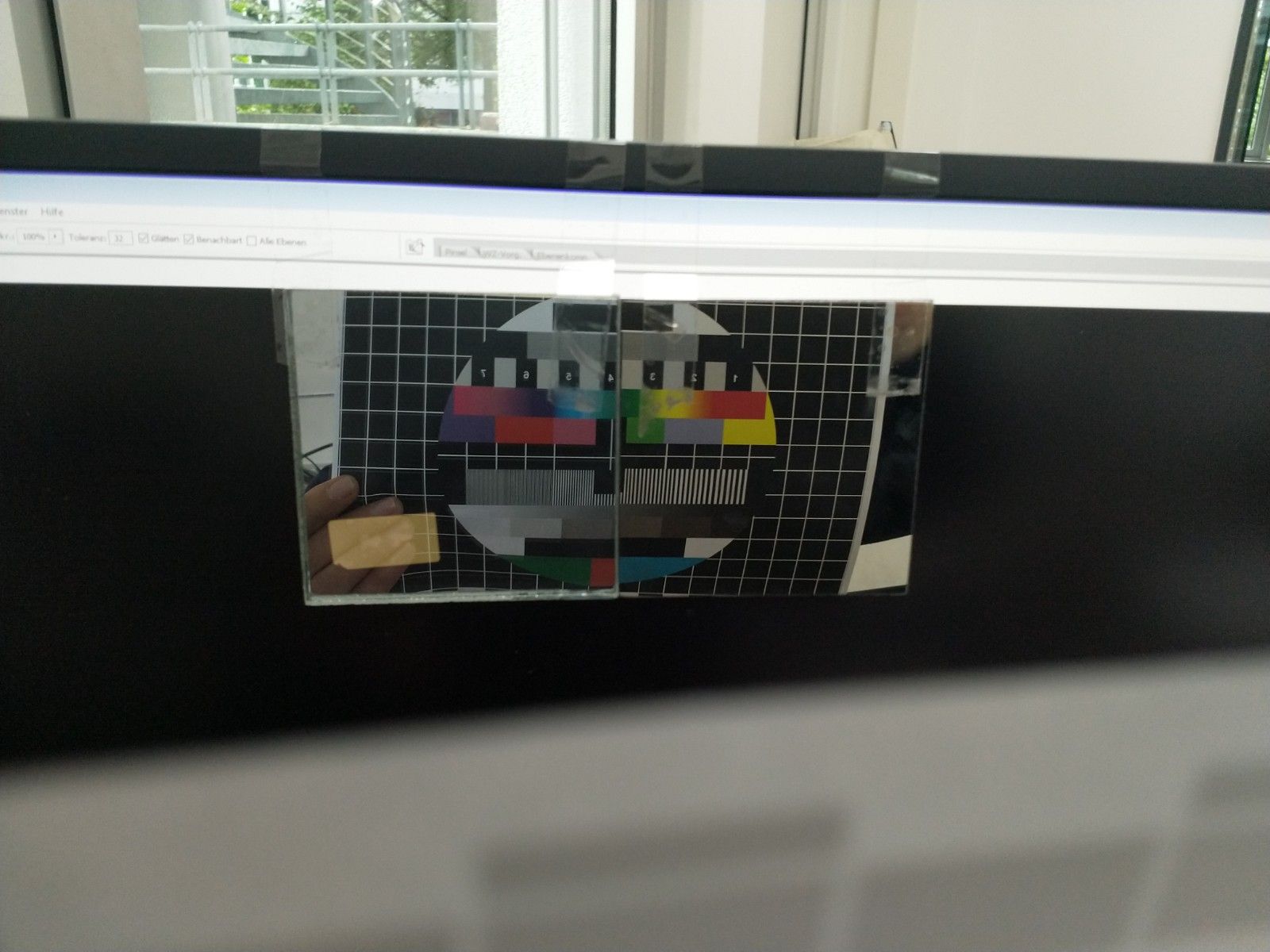
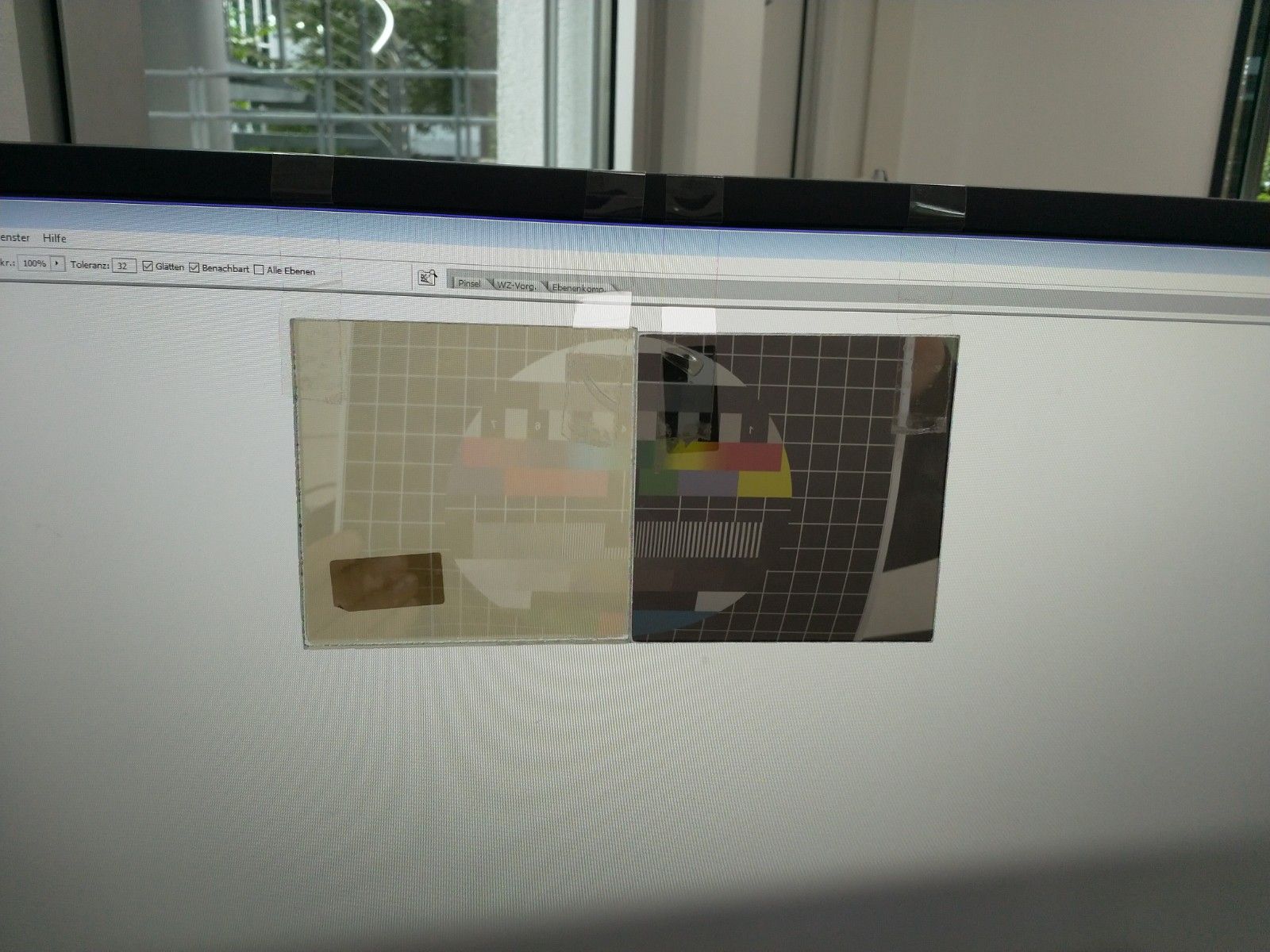
In terms of transmission the difference is far more noticeable in a dark or lit room!

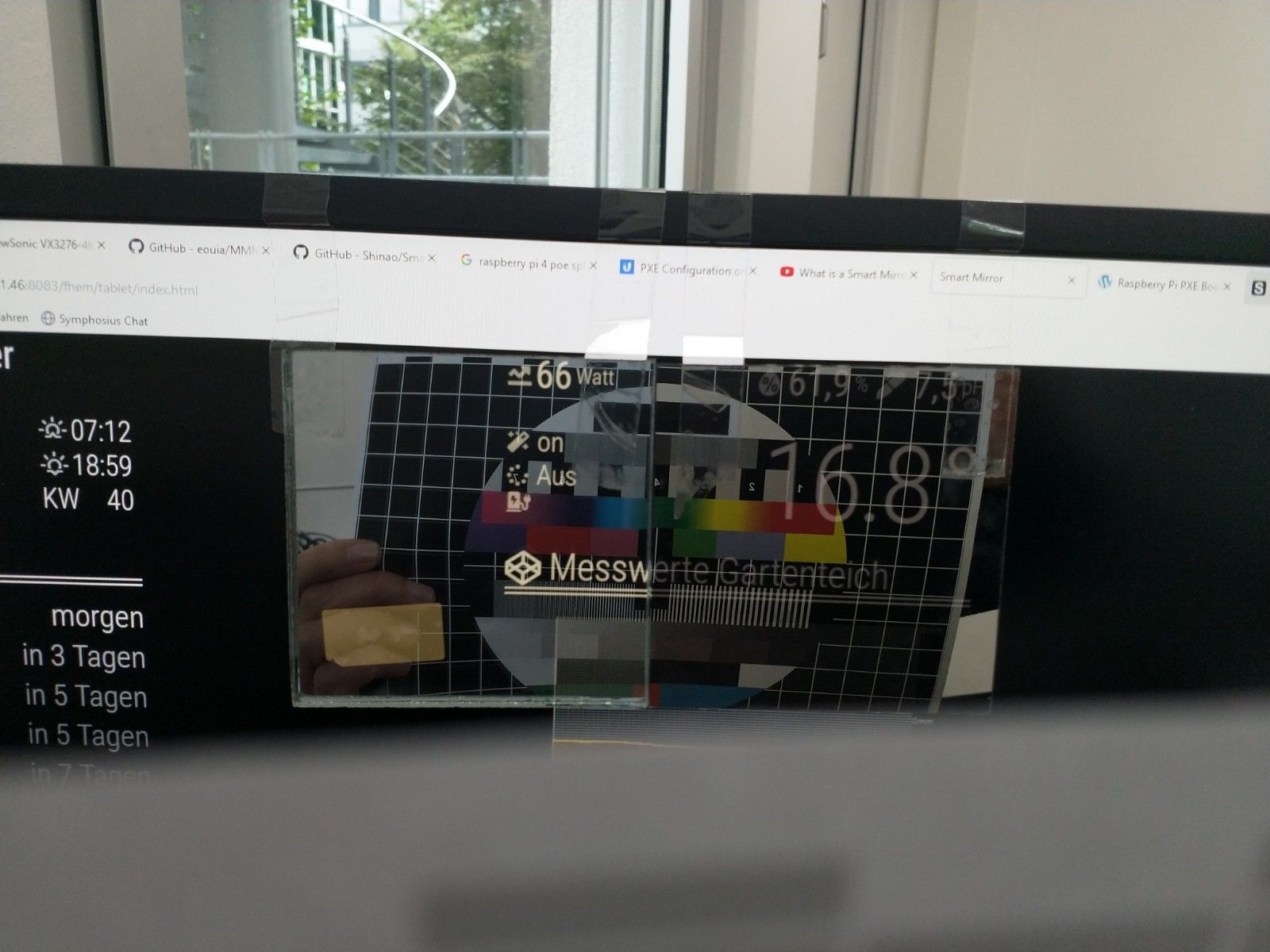
I’ll be happy to also compare Chriz’ mirror as well if I get a chance to buy a sample piece!
But as much as I remember his mirror has a transmission of ~ 24%. So I guess it’d be the same in terms of “font brightness”. Dunno about reflection though.
Cheers,
Tom
